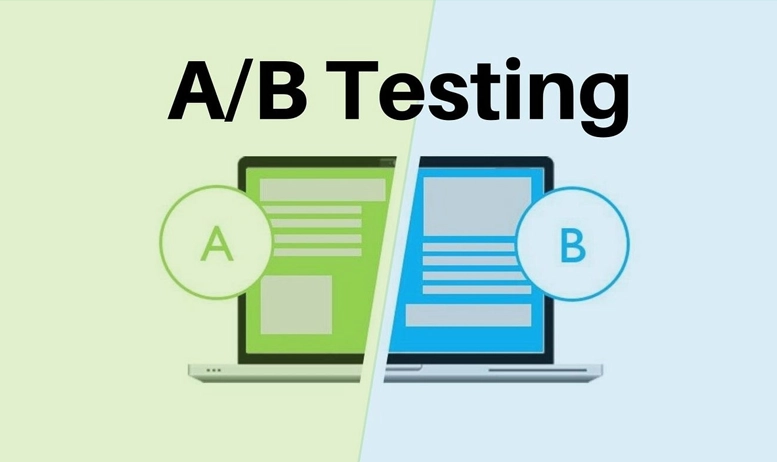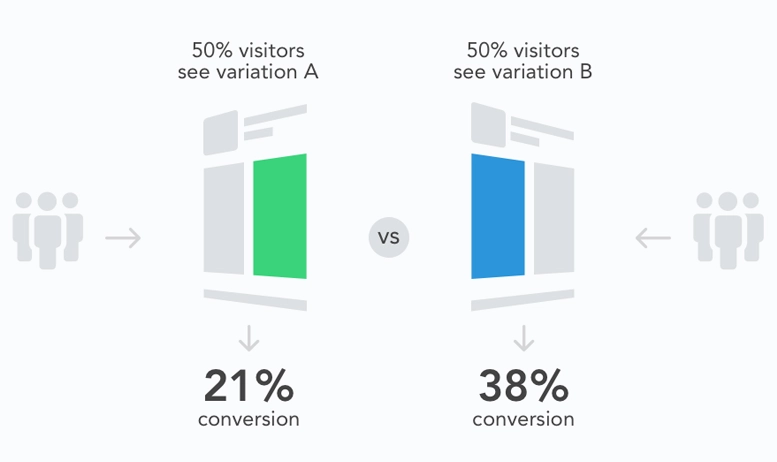
Imagine you have launched a new marketing or email campaign, app, or website and you are seeing analytics every few hours, hoping that you get the desired results. But even after many days, you do not see anything happening in your favor and you are clueless about what is going wrong. Many website owners, advertisers, and marketers face this scenario. So, how to avoid this situation? The answer is simple: A/B Testing. Let’s see what it is and how it optimizes your campaigns and helps you achieve desired outcomes.
What is A/B Testing
A/B testing, also known as split testing, is a marketing experiment where you compare the performance of two versions (A and B) of a campaign keeping only one factor variable. This variable factor includes UI elements, content, CTA (Call To Action), form fields, audience segmentation, pricing strategies, or navigation. It helps you identify which version appeals to the audience the most.

When to run A/B Testing
Through A/B testing, you can gather valuable insights and data from both versions to make better and more informed decisions. You can identify what is working and what is not, and refine your campaign to get the desired results. This helps you win higher engagement, better conversion rates, and eventually more revenue. In short, A/B testing helps you create a marketing campaign and a web presence that resonates closely with the audience.
Tips for Optimizing A/B Testing Marketing Campaigns
To ensure effectiveness and desired results, it is important to optimize A/B testing marketing campaigns. Follow these tips to enhance the campaign performance of your business in Christchurch.
1- Define a Goal
Before initiating an A/B testing marketing campaign, have a clear purpose in mind for which you are implementing this campaign. It is important to define a specific result you want to achieve to give direction to your campaign. Whether you want to improve CTR, enhance engagement, or increase conversion rates, set a specific and achievable goal that aligns with your business.
2- Determine Elements and Formulate a Hypothesis
After defining a clear goal, identify the elements to be tested that are more likely to enhance user experience. This is where you identify variables of the campaign that will impact user behavior and eventually performance metrics. It could be anything including a call to action, a headline, the layout, colors, or even the audience. The best practice is to choose and focus on only one variable in a campaign to identify which element is performing providing results.
After this, create a testable hypothesis about changes you think will help you in achieving your goal. It gives you a clear framework for evaluation. Here, you identify a specific variable to be tested and anticipate the results of that variable. Let’s say you hypothesize that changing the CTA of an ad copy will increase CTR. Also, specify the target segment that is going to be affected to help you in decision-making.
3- Create two variations
Based on the decided goals and variables in the early steps, create two distinct ad variations to test the hypothesis and identify which one performs the best. Remember that the difference is only in one key element and it should be distinctive enough that does not seem similar. For example, testing an ad with two similar age brackets (18-20 and 20-22-year-old women) will not give you the desired results.
4- Set a timeline and initiate testing
Remember that results take time and you need to have patience. Do not rush things and give some time to both variations to produce results. Do not expect quick results, nor wait for too long. Meta suggests that you should run the test until it starts producing results for at least 2 weeks, whichever produces results first.
5- Monitor and enhance performance
Once you start the campaign, wait for the results to be produced and keep monitoring the performance of both variations. Track KPIs throughout the duration including CTRs, conversion rates, and bounce rates. Compare the performance of both variations and identify which one is producing the desired outcomes and why. Discontinue the low-performing ad and keep going with the high-performing one.
Conclusion
Website owners, advertisers, and marketers use A/B testing to identify which factors of a marketing campaign resonate with the audience and enhance their experience. Once identified, such factors help them improve their overall ad performance and get the desired outcomes. This is successful only if you consider the above-mentioned factors to optimize your A/B testing and fulfill its actual purpose.


Write a comment